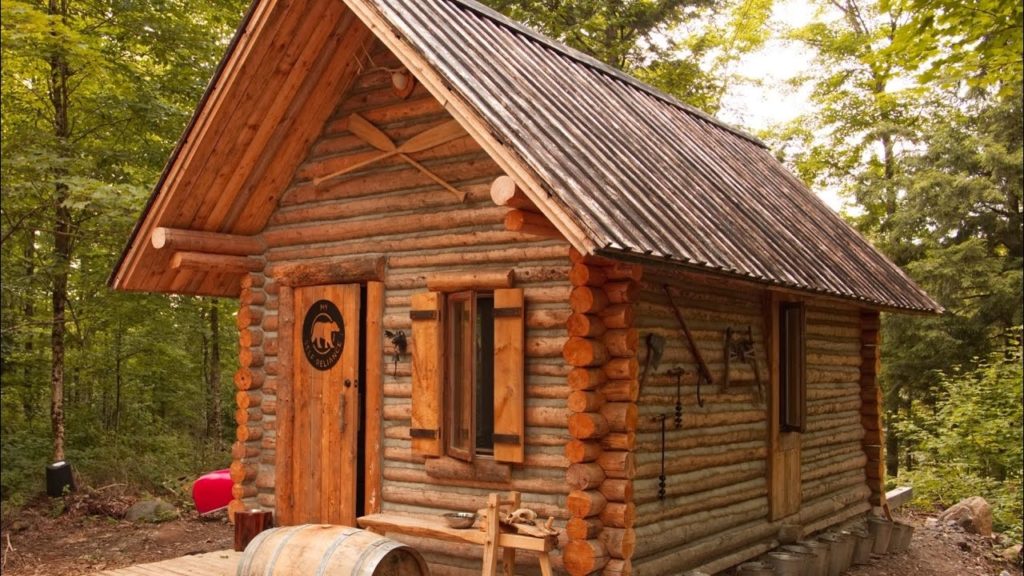Versatile, cozy, and beautiful, log cabins are a popular solution for extra garden space. They come in various shapes and sizes. You can use your log cabin as a games room, studio, or even a garden office.
But, with so many options out there, it can be difficult to decide which design you want to go with. Here are a few considerations to help you make the right decision.
Purpose
First, you need to decide on how you will use your new log cabin. Every next step you take will depend on this decision.
The purpose will help you determine the right size for your cabin, and the size will determine whether or not you need planning permission. It will also influence the design and the style of your log cabin.
For example, if you want to use your new log cabin as an office, it needs to be suitable for file storage and all the office equipment you need. You will also need to make sure you’ll be able to install internet in the cabin.
Whether you plan to use your log cabin as an office, playroom, storage facility, guest house, or living area, you need to make sure it can accommodate the necessary amenities.
Space
Your log cabin will be a significant feature, no matter what size you choose. Before you pick a log cabin, you need to make sure you have enough room for it in your garden. Generally, log cabin sizes range from 21 sq. ft. to 26×16 ft.
The best thing to do is to declutter your garden and then figure out how you will position the log cabin in it. This can help you with the next steps. For instance, if you realize the area is subject to sun glare, it may be best to go for a log cabin that has a large roof overhang.
Style
The style you choose will dictate both the interior and the exterior of your log cabin. If you want to use your cabin as an outdoor retreat where you can unwind with family and friends, you don’t need a massive structure. A traditional or Scandinavian style log cabin will do.
If you like Western decor, you can go for a more rustic look. But, if you want a log cabin office, a modern style cabin with extra-large windows may be the best option.
Installation
When it comes to installation, the most important thing is to find a suitable base. If you are confident in your DIY skills, you can even install the log cabin yourself.
Many manufacturers sell DIY log cabin kits. A DIY log cabin may require more time and planning, but it is a great way to save some money.
However, if you want to have heating and electronics in your cabin, it may be best to go with a log cabin manufacturer that offers professional installation, such as Timber Living.
Log cabin manufacturers typically charge an installation fee, but this is undoubtedly a safer choice when it comes to more complex structures. If you choose to have your cabin professionally installed, you won’t have to deal with the hassle of preparing the base and you can rest assured your cabin will be built to its full potential.
Energy-Efficiency
Wood is a natural insulator. Still, some log cabins are more energy-efficient than others. It is best to choose a log cabin manufacturer that uses advanced materials and methods.
Energy-efficient log cabins utilize weather boards, PIR insulation, and high-grade double glazing windows. These features add to the price initially, but they can save you a lot of money on energy bills.
Materials Used
When choosing a log cabin, make sure to ask about the quality and type of timber. The materials used to build your log cabin will have a direct impact on maintenance, comfort, and durability.
Pine, spruce, and other types of slow-growing conifer timber are typically the best choice. These types of timber are more resistant to rot and mold because they have fewer knots and sap.
The thickness of the cladding and the log length are also important factors. A cladding thickness ranging from 0.25 to 0.5 inches is enough if you want to use your cabin as a summerhouse or a garden shed.
If you want to use your log cabin as a home gym, or if you plan to use it 9 months of the year, choose a minimum cladding thickness of 0.75 inches. Choose a minimum cladding thickness of 1.75 inches if you plan to use your log cabin the whole year-round.
Takeaway
To make a wise decision in choosing the best log cabin for your garden, you need to consider the purpose, size, style, builder, and the type of timber. By investing some time and effort in picking out a log cabin, you will buy yourself peace of mind. A thoughtfully selected log cabin can serve you for decades to come.

